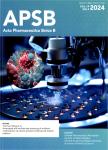Preliminary evidence for the presence of multiple forms of cell death in diabetes cardiomyopathy
Preliminary evidence for the presence of multiple forms of cell death in diabetes cardiomyopathy作者机构:Department of Endocrinologythe First Affiliated Hospital of Jinan UniversityGuangzhou 510630China Department of Endocrinologythe Second Affiliated Hospital of Harbin Medical UniversityHarbin 150081China Department of Pharmacology(State-Province Key Laboratories of Biomedicine-Pharmaceutics of ChinaKey Laboratory of Cardiovascular ResearchMinistry of Education)College of PharmacyHarbin Medical UniversityHarbin 150081China
出 版 物:《Acta Pharmaceutica Sinica B》 (药学学报(英文版))
年 卷 期:2022年第12卷第1期
页 面:1-17页
核心收录:
学科分类:1002[医学-临床医学] 100201[医学-内科学(含:心血管病、血液病、呼吸系病、消化系病、内分泌与代谢病、肾病、风湿病、传染病)] 10[医学]
基 金:supported by the National Natural Science Foundation of China Grant/Award Number:81770809
主 题:Diabetes mellitus Diabetic cardiomyopathy Cell death Apoptosis Autophagic cell death Aautosis Pyroptosis Necroptosis Ferroptosis
摘 要:Diabetic mellitus(DM) is a common degenerative chronic metabolic disease often accompanied by severe cardiovascular complications(DCCs) as major causes of death in diabetic patients with diabetic cardiomyopathy(DCM) as the most common DCC. The metabolic disturbance in DCM generates the conditions/substrates and inducers/triggers and activates the signaling molecules and death executioners leading to cardiomyocyte death which accelerates the development of DCM and the degeneration of DCM to heart *** forms of programmed active cell death including apoptosis, pyroptosis, autophagic cell death, autosis,necroptosis, ferroptosis and entosis have been identified and characterized in many types of cardiac *** has also been obtained for the presence of multiple forms of cell death in DCM. Most importantly,published animal experiments have demonstrated that suppression of cardiomyocyte death of any forms yields tremendous protective effects on DCM. Herein, we provide the most updated data on the subject of cell death in DCM, critical analysis of published results focusing on the pathophysiological roles of cell death, and pertinent perspectives of future studies.



